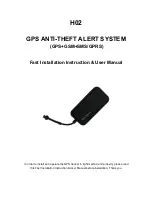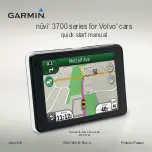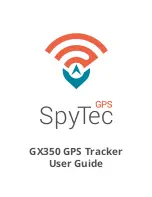
2.
DEVICE
CONNECTION
2.1 Installation
Before the system installation, first of all, it is necessary to determine the type and number of the connecting sensors,
the identification system and other additional equipment. It is also necessary to be sure that all the additional equipment
connected to the terminal are operable.
The device has internal sensitive GSM and GLONASS/GPS antennas, however, just before system installation and
equipment connection it is necessary to be sure that at the proposed location, the selected cellular operator provides
satisfactory communication quality.
The device should be installed in such a way as to ensure maximum “visibility” of the navigation satellites in the
upper hemisphere. The device must be oriented in space so that the internal GLONASS/GPS antenna is on top. That is,
when the device is placed vertically, the Microfit-14 interface connector should be located on the bottom, and on the
horizontal position, the SYS, GSM and NAV indicators should be on the top.
Attention!
In order to avoid overheating of the device and failure of the Li-Po battery, it is prohibited to install the tracker in
places with an ambient temperature more than +60 ° C, for example, near heating systems, etc. It is also prohibited to
place the device in a sealed container without heat dissipation.
It is prohibited to install tracker in places with high humidity and in places where there is a risk of possible ingress
of liquid or large amount of dust into the case.
Figure 16. Device unit. Location of GLONASS/GPS-antenna
When the device is connected to the Microfit-14 connector harness, the connector itself should not be connected to
the device. Each pin of this connector has a numeric code. The purpose of each pin on the Microfit-14 system connector is
shown in Figure16
At the stage of checking the correctness of the connection and settings of the device, it is not recommended to
directly include actuating devices in the output circuits. It is advisable to do this at the final stage of verification.
The power supply of digital and analogue fuel sensors must be connected through the fuses supplied with the sensors
directly to the power supply.
The power supply “-” (“ground”) of all connected external sensors must be combined with the power supply “-”
(contact “G”) of the device.
The interface lines of fuel sensors should be connected directly to the device without additional elements. Switches
must be made with the power off.
Connection to the car CAN bus should be carried out with the car ignition off.
Содержание SMART S-2423
Страница 11: ...Figure 13 Figure 14...











































